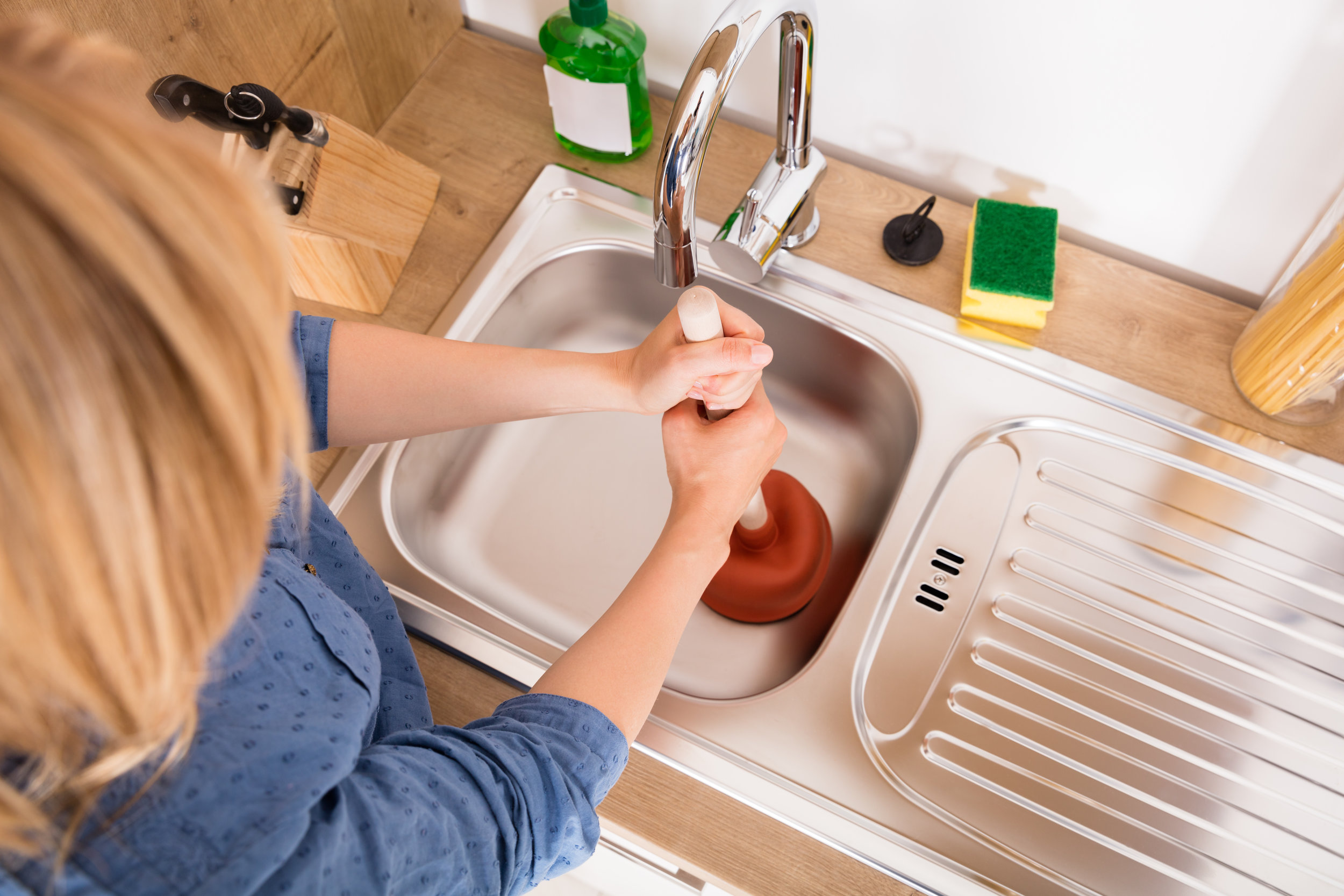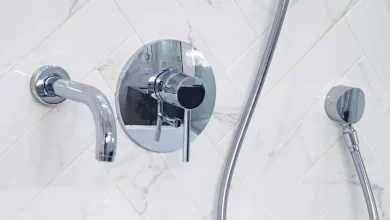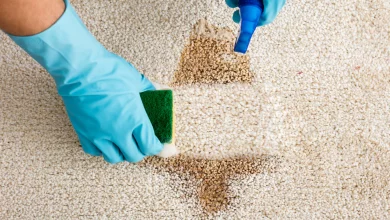How To Clean A Clogged Drain

How to clean a clogged drain – A clogged drain is a common household nuisance that can disrupt daily routines and cause frustration. Whether it’s a slow-draining sink, a backed-up shower, or a clogged toilet, dealing with a clogged drain is an essential skill for any homeowner. A clogged drain can create unsanitary conditions in your home. Standing water can become a breeding ground for bacteria, foul odors can arise, and stagnant water can attract pests. Cleaning clogs ensures a clean and hygienic environment, promoting the health and well-being of your household.
Knowing how to clean a clogged drain is important to maintain the functionality, hygiene, and longevity of your plumbing system. Regular cleaning prevents water damage, plumbing emergencies, and costly repairs. It also promotes a clean and sanitary living environment while minimizing environmental impact. By acquiring the skills to clean clogged drains, you become a proactive homeowner capable of maintaining a well-functioning and efficient plumbing system.
Read Also: How To Clean Grout Between Tiles
Comprehensive Guide: How to Clean a Clogged Drain and Restore Smooth Flow
In this comprehensive guide, we will walk you through the steps of cleaning a clogged drain, offering a range of methods and tips to help you restore smooth flow and prevent future clogs.
-
Understanding Common Causes of Drain Clogs
To effectively tackle a clogged drain, it’s important to understand the common causes. Accumulated hair, soap scum, food particles, grease, and mineral deposits are typical culprits. Identifying the cause will guide you in selecting the appropriate cleaning method.enoughinfo
-
Essential Tools and Safety Precautions
Before diving into the cleaning process, gather the necessary tools and take safety precautions. Some essential tools include a plunger, a plumbing snake or drain auger, a pair of gloves, and a bucket or old towels to catch water. Safety measures include wearing protective gloves, eye goggles, and ensuring proper ventilation in the area you are working.
-
Method 1: Using Boiling Water and Dish Soap
This simple and environmentally friendly method is effective for minor clogs caused by grease and soap scum. Start by boiling water and adding a few tablespoons of dish soap. Pour the mixture directly into the drain and let it sit for a few minutes. Follow up with hot tap water to flush away the loosened debris.
-
Method 2: Baking Soda and Vinegar Solution
This natural cleaning method is useful for addressing mild to moderate drain clogs. Begin by pouring half a cup of baking soda down the drain. Follow it up with a mixture of one cup of vinegar and one cup of hot water. Cover the drain opening to contain the reaction and allow the solution to work for about 15-30 minutes. Finally, flush the drain with hot water.
Read Also: How to Clean Stainless Steel Appliances
-
Method 3: Plunger Power
A plunger is a versatile tool for clearing clogs in sinks, showers, and toilets. Ensure there is enough water in the basin to cover the plunger’s head. Create a tight seal around the drain opening with the plunger, and apply vigorous up-and-down motions for about 20-30 seconds. The suction and pressure created should dislodge the clog. Flush the drain with water to check if the blockage is cleared.
-
Method 4: Manual Removal of Debris
For visible blockages within reach, manual removal is an effective option. Put on gloves and use a flashlight to inspect the drain for any visible debris. Use tweezers, pliers, or a bent wire hanger to gently remove the clog. Be cautious not to push the debris further into the pipe.
-
Method 5: Plumbing Snake or Drain Auger
A plumbing snake or drain auger is a flexible tool used to reach deep clogs. Insert the snake into the drain and rotate the handle clockwise to break through the obstruction. Once you feel resistance, continue rotating and pushing the snake until you break through or hook onto the clog. Slowly withdraw the snake while continuing to rotate it to help dislodge the clog. Flush the drain with hot water to remove any remaining debris.
-
Preventative Maintenance Tips
To prevent future drain clogs, incorporate these maintenance tips into your routine:
a. Use drain strainers or stoppers to catch hair, food particles, and other debris before they enter the drain. b. Avoid pouring grease, oil, and fat down the drain as they can solidify and cause clogs. c. Regularly clean drains by flushing them with hot water or a mixture of baking soda and vinegar to prevent the buildup of residue. d. Be cautious of what goes down the drain. Dispose of coffee grounds, dental floss, and other non-biodegradable items in the trash.
-
When to Seek Professional Help
While many drain clogs can be resolved using DIY methods, there are instances where professional help is necessary. Consider contacting a plumber if:
a. The clog persists despite attempting various cleaning methods.
b. Multiple drains in your home are clogged simultaneously.
c. You suspect a more significant issue within your plumbing system, such as a damaged or collapsed pipe.
A professional plumber has the expertise and tools to diagnose and address complex drain clogs effectively.
Read Also: How To Clean Hardwood Floors Naturally
The Fundamentals of Cleaning a Clogged Drain
- Gather the necessary tools: Before you start, gather the tools you’ll need, including rubber gloves, a plunger, a bucket or old towels, and a drain cleaning brush or a bent wire hanger.
- Clear the area and protect yourself: Clear any items around the drain and place a bucket or old towels beneath the drain to catch any water that may overflow. Put on rubber gloves to protect your hands during the cleaning process.
- Remove visible debris: If there is any visible debris, such as hair or food particles, use a drain cleaning brush or a bent wire hanger to gently remove it from the drain. Be careful not to push the debris further into the pipe.
- Use a plunger: For clogs in sinks or tubs, use a plunger to create suction and dislodge the blockage. Fill the sink or tub with enough water to cover the plunger’s head. Position the plunger over the drain and plunge vigorously up and down for about 20-30 seconds. Repeat this process several times if necessary. After plunging, flush the drain with hot water to see if the clog is cleared.
- Flush with hot water: Boil a kettle or pot of water and carefully pour it down the drain. The hot water can help dissolve any remaining debris and flush it away. Repeat this step a few times to ensure thorough cleaning.
- Test the drain: After cleaning, run water down the drain to check if it is flowing smoothly. If the water drains freely without any signs of clogging or slow drainage, the cleaning process was successful. If the problem persists, you may need to repeat the steps or try alternative methods.
- Practice preventative maintenance: To prevent future clogs, make it a habit to regularly clean your drains by flushing them with hot water or using a mixture of baking soda and vinegar. Also, use drain strainers or stoppers to catch debris before it enters the drain.
Remember, this basic method is suitable for minor clogs, but more stubborn or persistent clogs may require additional steps or the assistance of a professional plumber.
Cleaning a clogged drain using this basic method can help restore proper drainage and prevent further complications. However, if the clog persists or you’re dealing with a more complex plumbing issue, it’s advisable to seek professional help to avoid causing damage to your pipes or plumbing system.How to clean a clogged drain
FAQs & Answers
-
Why does my drain keep getting clogged?
There can be several reasons why your drain keeps getting clogged. Some common causes include the buildup of hair, soap scum, food particles, grease, and mineral deposits. Additionally, factors such as inadequate drainage slope, tree root intrusion, or old and deteriorating pipes can contribute to recurring clogs.
-
Can I use chemical drain cleaners to clear a clog?
While chemical drain cleaners can be effective in clearing some clogs, they are often harsh and can damage your pipes over time. It’s best to use natural and environmentally friendly methods, such as those mentioned in this guide, before resorting to chemical cleaners. If you do choose to use them, follow the instructions carefully and use them sparingly.
-
How often should I clean my drains to prevent clogs?
Regular maintenance is key to preventing clogs. Flushing your drains with hot water or a baking soda and vinegar solution once a month can help keep them clear. Additionally, using drain strainers or stoppers and being mindful of what goes down the drain can significantly reduce the likelihood of clogs.
-
Are there any home remedies for unclogging a drain?
Yes, there are several home remedies you can try before resorting to more invasive methods. Some effective remedies include using a mixture of baking soda and vinegar, pouring boiling water down the drain, or using a plunger to create suction and dislodge the clog. These methods are often safe, environmentally friendly, and readily available.
-
Can I use a plunger to unclog a toilet?
Yes, a plunger is an effective tool for unclogging toilets. Make sure you have enough water in the bowl to cover the plunger’s head. Create a tight seal around the drain opening and use the plunger with vigorous up-and-down motions. The suction and pressure should help dislodge the clog. If the clog persists, you may need to use a toilet auger or call a plumber.
-
Is it possible to prevent all drain clogs?
While it’s challenging to prevent all drain clogs entirely, you can significantly reduce the likelihood of clogs by practicing good drain maintenance habits. Regular cleaning, using drain strainers or stoppers, and being mindful of what goes down the drain can go a long way in preventing clogs. However, some clogs may still occur due to unforeseen circumstances or underlying issues with the plumbing system.
-
When should I consider calling a professional plumber?
If you have tried various cleaning methods and the clog persists, or if you notice multiple drains in your home are clogged simultaneously, it may be time to call a professional plumber. They have the expertise, specialized tools, and knowledge to diagnose and address complex clogs effectively. Additionally, if you suspect a more significant issue within your plumbing system, such as a damaged or collapsed pipe, a professional plumber should be consulted.
Remember, if you’re unsure or uncomfortable with tackling a clogged drain on your own, it’s always best to seek professional assistance to avoid causing further damage to your plumbing system.
Read Also: How to clean a laptop screen(A Step-by-Step Guide)
Conclusion
Cleaning a clogged drain is a task that every homeowner should be equipped to handle. By understanding the common causes of clogs, using the appropriate methods and tools, and practicing preventative maintenance, you can effectively clean your drains and restore smooth flow. Remember to prioritize safety and seek professional assistance when needed. With these tips in hand, you can tackle drain clogs with confidence and maintain a well-functioning plumbing system in your home.




